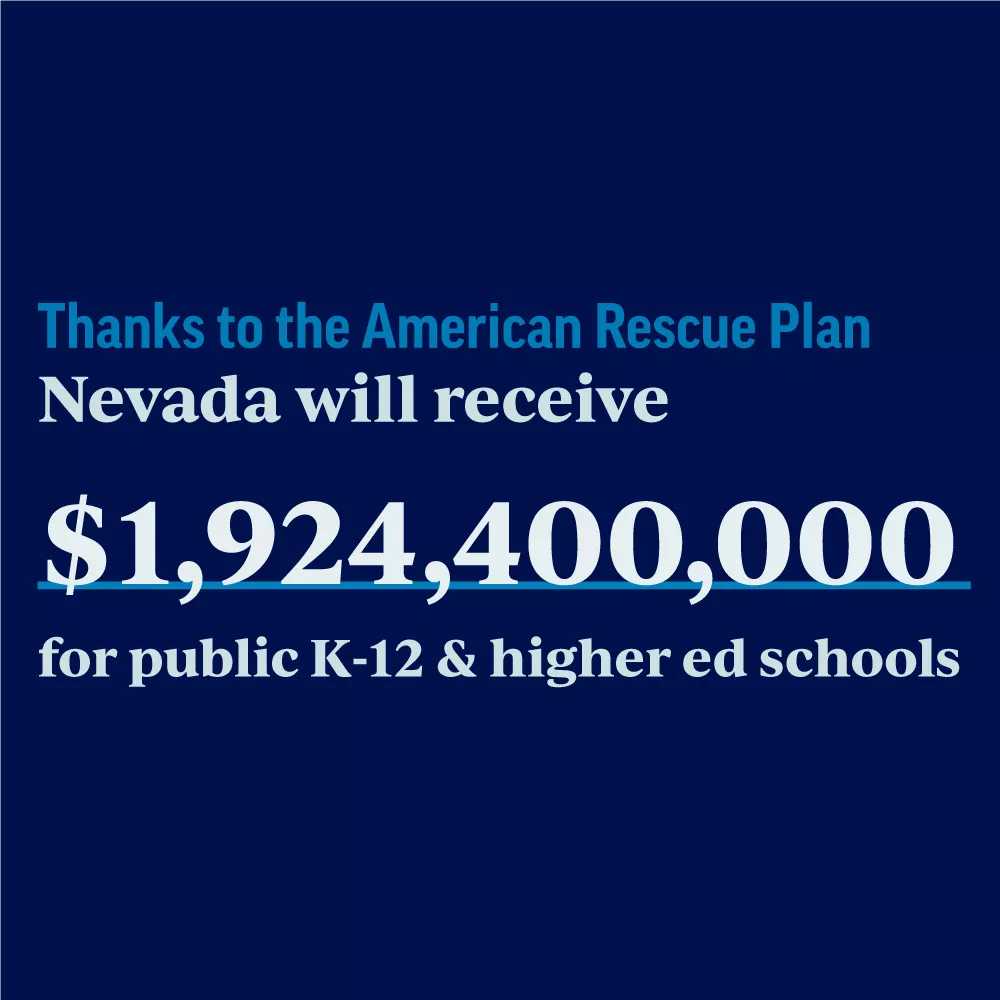On March 11, 2021, President Biden signed the American Rescue Plan into law. There is a lot to be excited about with this plan:
- Single largest investment ever in public education
- Will cut poverty for children under 18 by nearly 50 percent through expanding the Child Tax Credit to $3,600 for children under 6 and $3,000 for children 6 to 17
- Single largest one-time investment ever in the E-rate program—and the only appropriated investment in the program’s history—specifically to address the homework gap
Below, you will find a breakdown of some items pertaining to K12 Public Education. We have a summary sheet at the bottom of this page containing all other items.
Education Funding
Provides more than $170.3 billion for K-12 schools, higher education and related programs under the U.S. Department of Education (DoE), including:
- $122.8 billion for the Elementary and Secondary School Education Relief Fund (ESSER), with no less than 90 percent delivered through Title I, which may be used for purposes including:
- Activities authorized by ESEA, IDEA, Adult Education and Family Literacy, Perkins CTE, and McKinney-Vento Homeless Assistance;
- Improving coordination among state, local, tribal, and other entities to improve coordinated responses to prevent, prepare for, and respond to COVID-19;
- Activities and service delivery to address the unique needs of students who are low-income, children with disabilities, English learners, racial and ethnic minorities, students experiencing homelessness, and youth in foster care;
- Developing and implementing procedures and systems to improve the preparedness and response efforts of Local Education Agencies;
- Training and professional development on sanitation and minimizing the spread of infectious disease;
- Planning for, coordinating, and implementing activities during long-term closures, including providing meals to eligible students, providing technology for online learning, and providing guidance on meeting IDEA requirements;
- Purchasing education technology including hardware, software and connectivity for students and assistive technology or adaptive equipment;
- Providing services to support student mental health, including through full- service community schools;
- Planning summer learning, after-school, or online learning during the summer months;
- Addressing disrupted learning through evidence-based approaches which can include assessments and distance learning equipment;
- School facility repairs and improvements to reduce virus transmission and exposure to environmental health hazards, and to support student health needs;
- Inspection, testing, maintenance, repair, etc., to improve indoor air quality, HVAC and circulation systems and window and door upgrades;
- Developing and implementing public health protocols in line with CDC guidance for reopening schools to maintain the health and safety of students, educators and other staff; and,
- Other activities necessary to open and maintain services in LEAs including continued employment of existing staff.
- The law also prioritizes addressing students’ disrupted learning, among other new priorities, by requiring LEAs to reserve no less than 20 percent of their funds to address disrupted learning, and SEAs must:
- reserve no less than 5 percent to address disrupted learning;
- no less than 1 percent for summer enrichment programs;
- no less than 1 percent for comprehensive afterschool programs; and, not more than 0.5 for administrative costs.
Homework Gap
- Provides $7.172 billion in emergency funds to the Federal Communications Commission’s E- rate program to help schools ensure all K-12 students have an internet connection or a device adequate for distance learning at home so they can participate in remote learning.
